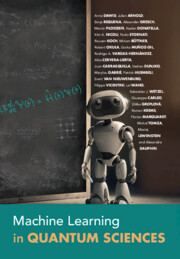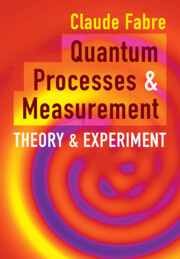Refine search
Actions for selected content:
9 results
10 - Untangling Entanglement History: Early Quantum Contributions of Chien-Shiung Wu
-
-
- Book:
- Women in the History of Quantum Physics
- Published online:
- 02 July 2025
- Print publication:
- 19 June 2025, pp 277-308
-
- Chapter
- Export citation
6 - Laura Chalk and the Stark Effect
-
-
- Book:
- Women in the History of Quantum Physics
- Published online:
- 02 July 2025
- Print publication:
- 19 June 2025, pp 172-197
-
- Chapter
- Export citation

Machine Learning in Quantum Sciences
-
- Published online:
- 13 June 2025
- Print publication:
- 12 June 2025
9 - Conclusion and outlook
-
- Book:
- Machine Learning in Quantum Sciences
- Published online:
- 13 June 2025
- Print publication:
- 12 June 2025, pp 254-257
-
- Chapter
- Export citation
11 - Action at a Distance
-
-
- Book:
- Percy Shelley for Our Times
- Published online:
- 07 March 2024
- Print publication:
- 14 March 2024, pp 238-259
-
- Chapter
-
- You have access
- Open access
- HTML
- Export citation

Quantum Processes and Measurement
- Theory and Experiment
-
- Published online:
- 27 July 2023
- Print publication:
- 10 August 2023
Chapter 7 - Copenhagen, 1962–1963: A Return to the History of Science
- from Part III - Kuhn and the History of Science
-
- Book:
- Kuhn's Intellectual Path
- Published online:
- 02 February 2022
- Print publication:
- 30 September 2021, pp 121-135
-
- Chapter
- Export citation
Chapter 1 - The Genealogy of Thomas Kuhn’s Metaphysics
- from Part I - Foundational Issues
-
-
- Book:
- Interpreting Kuhn
- Published online:
- 25 June 2021
- Print publication:
- 08 July 2021, pp 9-26
-
- Chapter
- Export citation
2 - A Most Dangerous Method
- from Part I - Fin-de-Siècle Vienna
-
- Book:
- Wounded Healers
- Published online:
- 17 December 2020
- Print publication:
- 03 December 2020, pp 29-43
-
- Chapter
- Export citation
